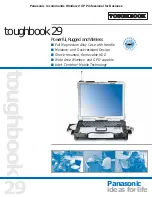
ACTION
MEASURE
IF
THEN
Step 10 – Move the meter test lead to the
other terminal of the first circuit breaker.
Leave the other meter test lead as located
in Step 6.
Step 11 – Plug AC cord into wall
receptacle. Measure voltage and unplug.
Measure voltage
100-130 volts AC
or
200-260 volts AC
No
Check whether the
first circuit breaker
popped out. If yes,
perform Step 1 and
reset the first circuit
breaker.
Step 12 – Leave the meter test lead at the
first circuit breaker terminal as located in
Step 10. Move the other meter test lead to
the terminal (that is connected to the
voltage selection switch) of the other
circuit breaker (referred to as the second
circuit breaker).
Step 13 – Plug AC cord into wall
receptacle. Measure voltage and unplug.
Measure voltage
100-130 volts AC
only.
No
Check connections at
voltage selection
switch and to circuit
breaker. If O.K.
replace voltage
selection switch.
Step 14 – Leave the meter test lead at the
first circuit breaker as located in Step 10.
Move the other meter test lead to the
other terminal of the second circuit
breaker.
Step 15 – Plug AC cord into wall
receptacle. Measure voltage and unplug
Measure voltage
100-130 volts AC
only.
No
Check whether
circuit breaker
popped out. If yes,
perform Step 1 and
reset the second
circuit breaker. If no,
replace the second
circuit breaker.
AC CIRCUIT CHECKOUT PROCEDURE
SCR CHECKOUT PROCEDURE
Unplug AC plug and DC plug.
Unplug J1 and J2 (If applicable) connector on circuit boards.
1. With VOM set to ohms, place one test lead on heatsink and the other on cathode (long stem).
Should read high resistance.
2. With VOM set to ohms, place one test lead on heatsink and the other on gate (short stem).
Should read high resistance.
3. With one probe on cathode and one on gate, should read low resistance; reversing probes should
read low resistance.





































